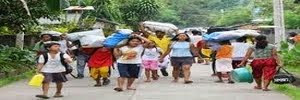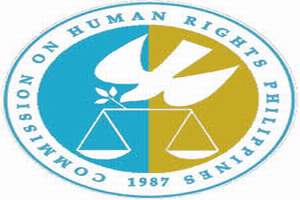|
From the Website of DILG
links: http://www.dilg.gov.ph/news/Federalism-whats-in-it-for-you-DILG-going-around-the-barangays-to-explain/NC-2017-1156 |
DILG: Gov't on top of Leyte quake disaster response
links: http://www.dilg.gov.ph/news/DILG-Govt-on-top-of-Leyte-quake-disaster-response/NC-2017-1155
-----------------------------
Federalism, in all its forms and intricacies, comes foreign and strange
to many Filipinos who are used to a unitary state presidential form of
government ever since its freedom from colonialism.
To promote an informed opinion about the government’s proposed shift to federalism, Assistant Secretary for Plans and Programs Epimaco V. Densing III of the Department of the Interior and Local Government (DILG) said that the Department is bringing the advocacy campaign down to the barangay level.
“The Department believes it is necessary to talk to communities instead of bigger crowds at the provincial, city, or municipal level. Explaining at the barangay level makes discussions or fora more interactive and therefore easier for people to comprehend and appreciate federalism,” said Densing who was speaking via radio phone patch interview on Wednesday for the "Government in Action" program of DZXL RMN 558 kHz.
Densing, who was in a middle of a federalism forum in Barangay Sucat, Muntinlupa City, said that the DILG will see to it that federalism information campaign will be done in most, if not all, barangays nationwide.
“Cabinet officials like I should go down and interact with the Filipino people as mandated by the current administration,” he pointed out.
“What we are explaining in barangays are basics on what is federalism and its benefits for ordinary Filipino people. We do not make it complicated,” he said.
With partnership comes power
The Assistant Secretary shared that the DILG is partnering with the biggest groups, including those from the private sector and academe, who are likewise championing federalism to have collective direction and model of federalism to advocate.
“With unity comes a more powerful campaign and through our synergy, we can stop confusing the public on what federalism path to take,” he said.
“Hopefully in two weeks’ time, we can release and finalize what federalism model is best suited for the Philippines,” he said.
“Whether constituent assembly (con-ass) or constitutional convention (con-con), we will have a clear roadmap to take,” he added.
Economic viability for regional states
Densing emphasized the economic viability for regional states once the country shifts to federalism.
“The central and regional states in federalism will have a division of power and duties. The central state will be in charge of matters that are naturally national in scope such as foreign affairs and immigration, to mention a few. Meanwhile, regional states will take care of basic services such as education and social welfare, among others,” he explained.
“Regional states will be able to retain 70 to 80 percent of taxes and remit only 30 to 20 percent to the central state. Hence, regions will have more economic viability in federalism. The government will be closer to the people,” he said.
He added that federalism will address the perennial political problem of Internal Revenue Allotment (IRA) being withheld by the national government from local chief executives of local government units (LGUs) who belong to political parties opposing the ruling party.
“Records show that hundred billions of pesos of IRA are not released to LGUs because of political bickering in the present unitary form of government,” he said.
How poor regions can catch-up
Densing noted that there will be an equity fund for less developed regions to catch-up with more developed ones.
“The fund will come from more prosperous regional states. This subsidy will be given to developing regions for five to 10 years,” he said.
In addition, regions can do “twinning” wherein less developed regions can establish sisterhood with more developed ones for guidance and support.
However, he clarified that federalism will not cause divisiveness among regional states.
“Ever since, each region in the country had their own identities and what we are doing (in federalism) is really existing,” he said.
“If at end of the day, if you shift the form of government but the people remain poor, then it is useless. The ultimate objective is to improve the quality of life of the Filipino people,” he said.
Will it stop political dynasty?
The DILG Assistant Secretary said that a proposal will be done for political dynasty to be operationally defined in the Constitution.
“As much as possible, we make into up to fourth degree of consanguinity and affinity. But on the positive side, term limit can be removed so that if a leader is performing well, then he/she can run again,” he said.
He underscored that 75 percent of places where a political dynasty is present display a high poverty incidence.
To promote an informed opinion about the government’s proposed shift to federalism, Assistant Secretary for Plans and Programs Epimaco V. Densing III of the Department of the Interior and Local Government (DILG) said that the Department is bringing the advocacy campaign down to the barangay level.
“The Department believes it is necessary to talk to communities instead of bigger crowds at the provincial, city, or municipal level. Explaining at the barangay level makes discussions or fora more interactive and therefore easier for people to comprehend and appreciate federalism,” said Densing who was speaking via radio phone patch interview on Wednesday for the "Government in Action" program of DZXL RMN 558 kHz.
Densing, who was in a middle of a federalism forum in Barangay Sucat, Muntinlupa City, said that the DILG will see to it that federalism information campaign will be done in most, if not all, barangays nationwide.
“Cabinet officials like I should go down and interact with the Filipino people as mandated by the current administration,” he pointed out.
“What we are explaining in barangays are basics on what is federalism and its benefits for ordinary Filipino people. We do not make it complicated,” he said.
With partnership comes power
The Assistant Secretary shared that the DILG is partnering with the biggest groups, including those from the private sector and academe, who are likewise championing federalism to have collective direction and model of federalism to advocate.
“With unity comes a more powerful campaign and through our synergy, we can stop confusing the public on what federalism path to take,” he said.
“Hopefully in two weeks’ time, we can release and finalize what federalism model is best suited for the Philippines,” he said.
“Whether constituent assembly (con-ass) or constitutional convention (con-con), we will have a clear roadmap to take,” he added.
Economic viability for regional states
Densing emphasized the economic viability for regional states once the country shifts to federalism.
“The central and regional states in federalism will have a division of power and duties. The central state will be in charge of matters that are naturally national in scope such as foreign affairs and immigration, to mention a few. Meanwhile, regional states will take care of basic services such as education and social welfare, among others,” he explained.
“Regional states will be able to retain 70 to 80 percent of taxes and remit only 30 to 20 percent to the central state. Hence, regions will have more economic viability in federalism. The government will be closer to the people,” he said.
He added that federalism will address the perennial political problem of Internal Revenue Allotment (IRA) being withheld by the national government from local chief executives of local government units (LGUs) who belong to political parties opposing the ruling party.
“Records show that hundred billions of pesos of IRA are not released to LGUs because of political bickering in the present unitary form of government,” he said.
How poor regions can catch-up
Densing noted that there will be an equity fund for less developed regions to catch-up with more developed ones.
“The fund will come from more prosperous regional states. This subsidy will be given to developing regions for five to 10 years,” he said.
In addition, regions can do “twinning” wherein less developed regions can establish sisterhood with more developed ones for guidance and support.
However, he clarified that federalism will not cause divisiveness among regional states.
“Ever since, each region in the country had their own identities and what we are doing (in federalism) is really existing,” he said.
“If at end of the day, if you shift the form of government but the people remain poor, then it is useless. The ultimate objective is to improve the quality of life of the Filipino people,” he said.
Will it stop political dynasty?
The DILG Assistant Secretary said that a proposal will be done for political dynasty to be operationally defined in the Constitution.
“As much as possible, we make into up to fourth degree of consanguinity and affinity. But on the positive side, term limit can be removed so that if a leader is performing well, then he/she can run again,” he said.
He underscored that 75 percent of places where a political dynasty is present display a high poverty incidence.
DILG Website
http://www.dilg.gov.ph/
links:
http://www.dilg.gov.ph/news/Federalism-whats-in-it-for-you-DILG-going-around-the-barangays-to-explain/NC-2017-1156
links:
http://www.dilg.gov.ph/news/Federalism-whats-in-it-for-you-DILG-going-around-the-barangays-to-explain/NC-2017-1156
OTHER HUMAN RIGHTS PROMOTIONS WEBSITES
Human Rights Advocacy Promotions | Human RightsHome - Human rights Promotions Website
PROTECTION AND PROMOTION OF HUMAN RIGHTS
-----------------------------------------------------------------------------------------------
------------------------------------------------------------
-----------------------------


























































0 comments:
Post a Comment